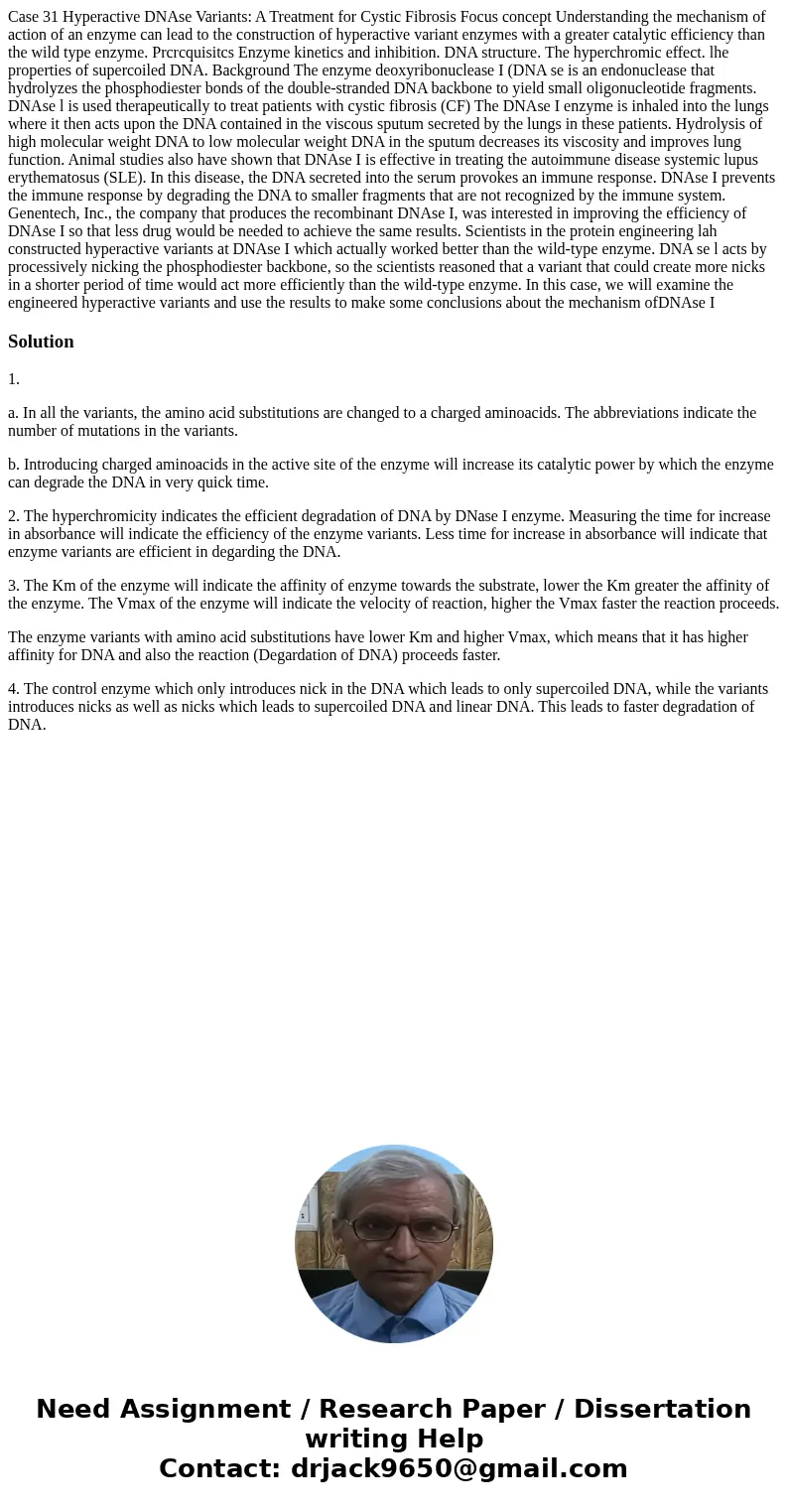Case 31 Hyperactive DNAse Variants: A Treatment for Cystic Fibrosis Focus concept Understanding the mechanism of action of an enzyme can lead to the construction of hyperactive variant enzymes with a greater catalytic efficiency than the wild type enzyme. Prcrcquisitcs Enzyme kinetics and inhibition. DNA structure. The hyperchromic effect. lhe properties of supercoiled DNA. Background The enzyme deoxyribonuclease I (DNA se is an endonuclease that hydrolyzes the phosphodiester bonds of the double-stranded DNA backbone to yield small oligonucleotide fragments. DNAse l is used therapeutically to treat patients with cystic fibrosis (CF) The DNAse I enzyme is inhaled into the lungs where it then acts upon the DNA contained in the viscous sputum secreted by the lungs in these patients. Hydrolysis of high molecular weight DNA to low molecular weight DNA in the sputum decreases its viscosity and improves lung function. Animal studies also have shown that DNAse I is effective in treating the autoimmune disease systemic lupus erythematosus (SLE). In this disease, the DNA secreted into the serum provokes an immune response. DNAse I prevents the immune response by degrading the DNA to smaller fragments that are not recognized by the immune system. Genentech, Inc., the company that produces the recombinant DNAse I, was interested in improving the efficiency of DNAse I so that less drug would be needed to achieve the same results. Scientists in the protein engineering lah constructed hyperactive variants at DNAse I which actually worked better than the wild-type enzyme. DNA se l acts by processively nicking the phosphodiester backbone, so the scientists reasoned that a variant that could create more nicks in a shorter period of time would act more efficiently than the wild-type enzyme. In this case, we will examine the engineered hyperactive variants and use the results to make some conclusions about the mechanism ofDNAse I
1.
a. In all the variants, the amino acid substitutions are changed to a charged aminoacids. The abbreviations indicate the number of mutations in the variants.
b. Introducing charged aminoacids in the active site of the enzyme will increase its catalytic power by which the enzyme can degrade the DNA in very quick time.
2. The hyperchromicity indicates the efficient degradation of DNA by DNase I enzyme. Measuring the time for increase in absorbance will indicate the efficiency of the enzyme variants. Less time for increase in absorbance will indicate that enzyme variants are efficient in degarding the DNA.
3. The Km of the enzyme will indicate the affinity of enzyme towards the substrate, lower the Km greater the affinity of the enzyme. The Vmax of the enzyme will indicate the velocity of reaction, higher the Vmax faster the reaction proceeds.
The enzyme variants with amino acid substitutions have lower Km and higher Vmax, which means that it has higher affinity for DNA and also the reaction (Degardation of DNA) proceeds faster.
4. The control enzyme which only introduces nick in the DNA which leads to only supercoiled DNA, while the variants introduces nicks as well as nicks which leads to supercoiled DNA and linear DNA. This leads to faster degradation of DNA.

 Homework Sourse
Homework Sourse